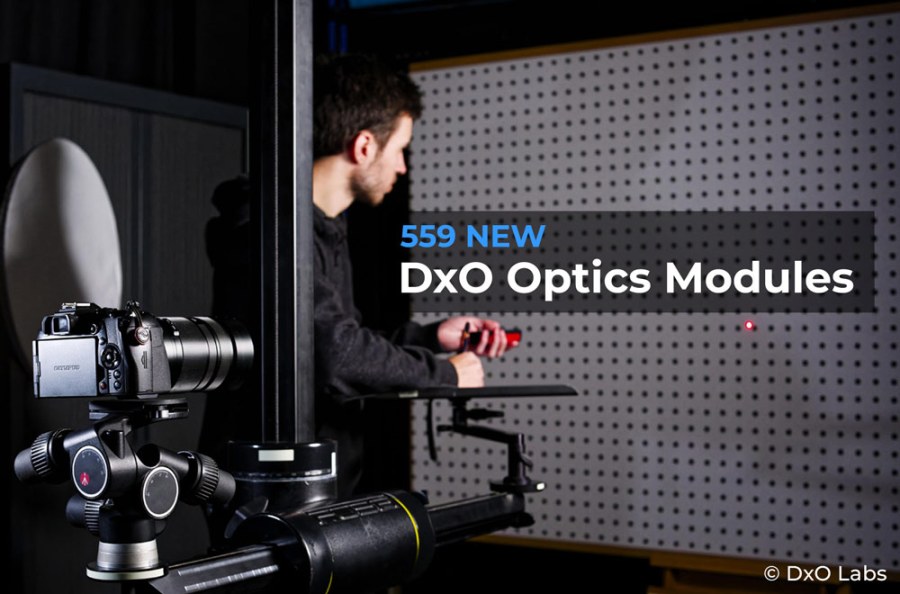DxO is amongst the most innovative makers of camera optimisation and photo-editing software, with well-known products including the Nik Collection and PureRaw.
The company has launched its latest batch of Optic Modules, with the lens correction and optimisation software now including the Panasonic Lumix G9 II, Canon RF 10-20mm f/4 L IS STM lens and DJI Mini Pro 4 drone.

The Panasonic G9 II is now covered by the updates. Credit: Andy Westlake
Seven more Nikon lenses are now covered, including the 180-600mm F5.6-6.3 VR, various 400mm and 600mm primes, and glass from Tokina and Vitrox.
‘Created in DxO’s purpose-built laboratories, these profiles are unique to each specific camera-lens combination,’ said DxO. ‘This ensures the adjustments made by DxO software are always delivered with total precision and unlock the full potential of the photographer’s chosen equipment.’
DxO Optics Modules now cover 558 cameras and 1,662 lenses. To check your camera and lens compatibility, click here.
From DxO, December 2023
DxO, the leader in sensor denoising and automatic optical corrections, today announces support for 559 new camera and lens combinations. This latest release enables DxO’s software to maximize the image quality of photographs made on the recently released Panasonic Lumix G9 II camera and DJI Mini Pro 4 drone.
Among the new DxO Optics Modules — which enable DxO software to automatically recognize and deal with known optical and sensor issues — are numerous high-quality lenses, including the impressive Nikon Nikkor TC VR S 400mm f/2.8 and 600mm f/4 telephoto lenses, the Nikon Nikkor Z 180-600mm f/5.6-6.3 V ultra-telephoto zoom, Tokina’s atx-m f/1.4 23mm and 33mm X PLUS prime lenses, the Viltrox AF 27mm f/1.2 Pro XF lens with Fuji X mount, the Viltrox 85mm f/1.8 Mark II for Nikon Z, and the world’s widest angle full-frame zoom lens with autofocus and stabilization tech — the Canon RF 10-20mm F4 L IS STM.
The new DxO Optics Modules
The latest Modules — available from today — include the following cameras and lenses, each optimised for multiple body-glass configurations:
Cameras
• DJI Mini 4 Pro
• Panasonic Lumix G9 II
Lenses
• Canon RF 10-20mm F4 L IS STM
• DJI Mini 4 Pro Lens
• Nikon Nikkor Z 180-600mm F5.6-6.3 V
• Nikon Nikkor Z 400mm F2.8 TC VR S
• Nikon Nikkor Z 400mm F2.8 TC VR S with Z TC 1.4x
• Nikon Nikkor Z 400mm F2.8 TC VR S with Z TC 2x
• Nikon Nikkor Z 600mm F4 TC VR S
• Nikon Nikkor Z 600mm F4 TC VR S with Z TC 1.4x
• Nikon Nikkor Z 600mm F4 TC VR S with Z TC 2x
• Tokina atx-m 23mm F1.4 X PLUS
• Tokina atx-m 33mm F1.4 X PLUS
• Viltrox 85mm F1.8 Mark II Z
• Viltrox AF 27mm F1.2 Pro XF
What are DxO Optics Modules?
Whether shooting with professional-grade equipment or entry-level gear, photographers can achieve noticeably sharper, cleaner, and less distorted images with DxO Optics Modules. Created in DxO’s purpose-built laboratories, these profiles are unique to each specific camera-lens combination. This ensures that the adjustments made by DxO software are always delivered with total precision and unlock the full potential of the photographer’s chosen equipment.
DxO Optics Modules are integral to DxO’s entire range of software: PhotoLab, PureRAW, ViewPoint, FilmPack, and in Nik Collection as part of Nik Perspective Efex. Today, the total number of available DxO Optics Modules is almost 90,000 and covers 558 cameras, 1,662 lenses, and countless pairings of models from all the leading manufacturers.
This colossal library of data, which is the result of two decades’ worth of research, means that photographers can immediately enjoy the best possible results from the gear in which they have invested.
Further reading
DxO Nik Collection review
DxO PureRaw 3 review








